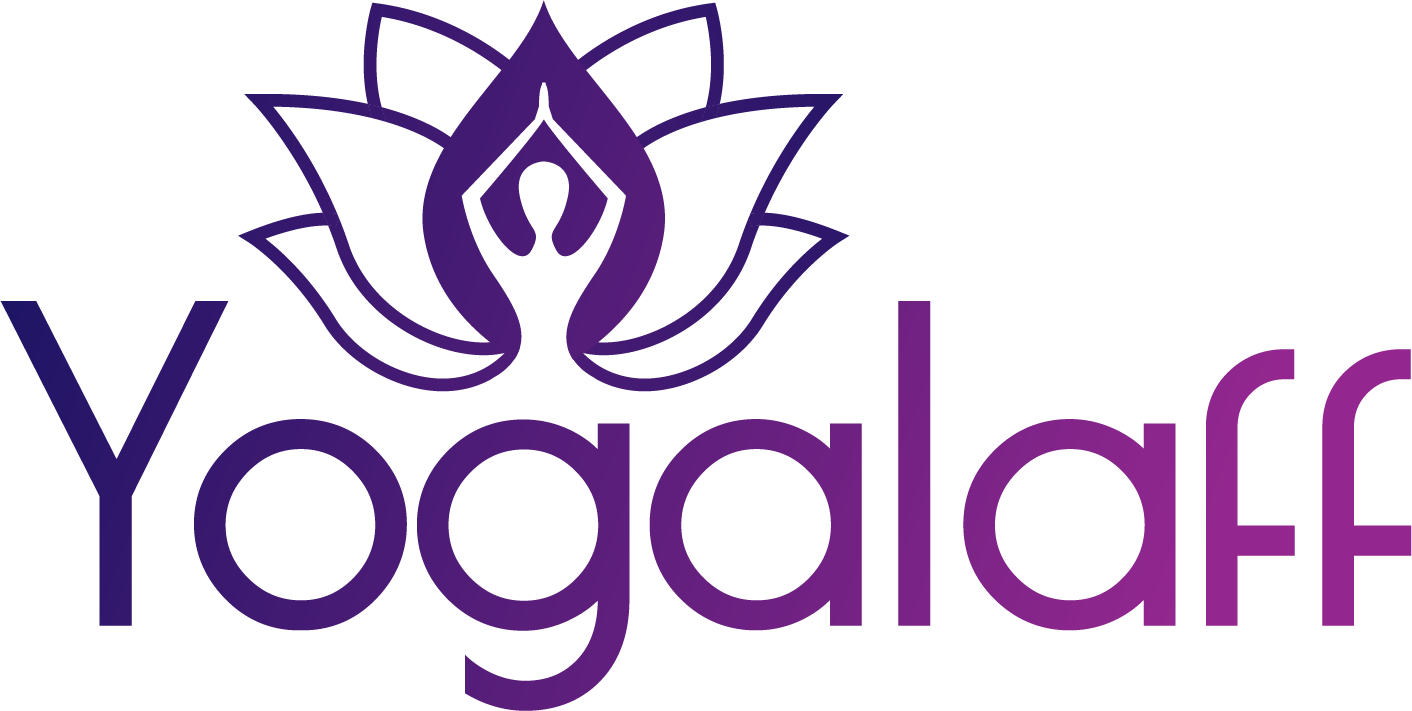Do you enjoy yoga?
Do you have high blood pressure (also known as hypertension)?
You are not alone in your love of yoga or your struggle with high blood pressure.
Please do not feel discouraged.
There are many yoga poses to avoid with high blood pressure, but you can still enjoy yoga and do most of the poses except the ones that will be discussed below.
Yoga has amazing benefits. It is extremely therapeutic and can naturally reduce stress and tension which are some of the main causes of high blood pressure.
Yoga can assist in lowering high blood pressure, but you have to choose the correct poses. Poses that do not put your legs higher than your heart and your heart higher than your head.
There are certain poses such as the ones discussed below that require your body to be inverted and have your head below your heart which is an immediate red flag for individuals with high blood pressure.
You may be wondering why you should avoid these poses if you have high blood pressure and that is what this article will discuss more in depth.
Modifications are available for some of the yoga poses if you want to use modified versions in your yoga practice. Please monitor yourself while doing the modifications and stop immediately if you are not feeling well.
Yoga Poses to Avoid with High Blood Pressure
These are poses that are contraindications of high blood pressure. You do not want to do these poses with hypertension. Although, it’s important to note that we are not medical professionals, and you should always consult a licensed, medical professional before using opinions from this blog.
1. Headstand
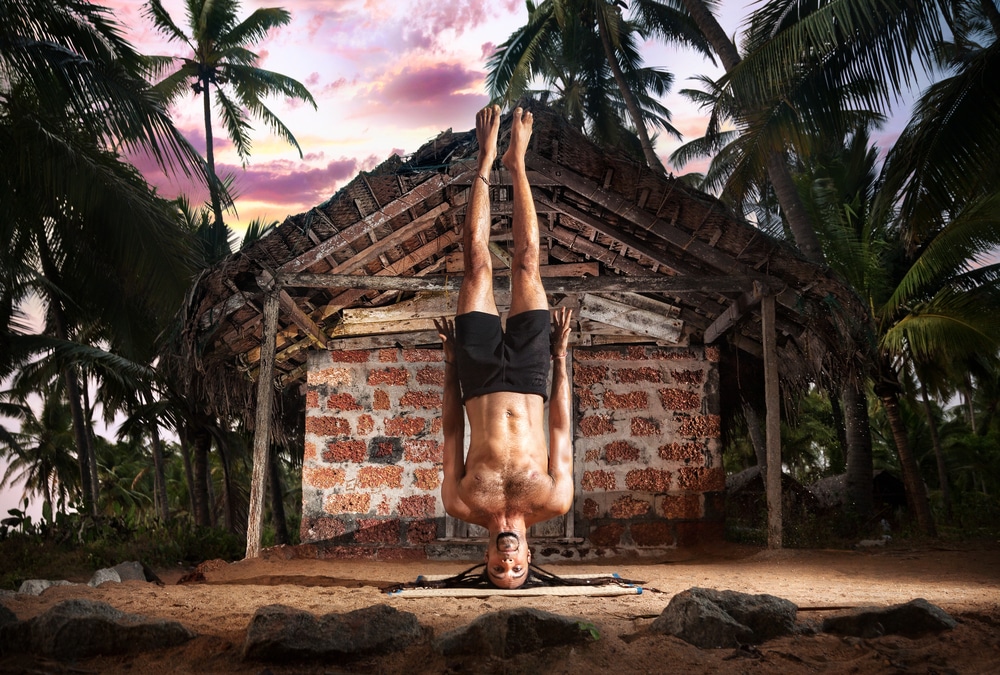 Headstands force your legs above your head as well as your heart above your head, which is not the best option for individuals with high blood pressure.
Headstands force your legs above your head as well as your heart above your head, which is not the best option for individuals with high blood pressure.
It is best that you are upright and allowing your blood to flow smoothly through your veins. Headstands should be done with care and monitored thoroughly.
2. Forearm Stand
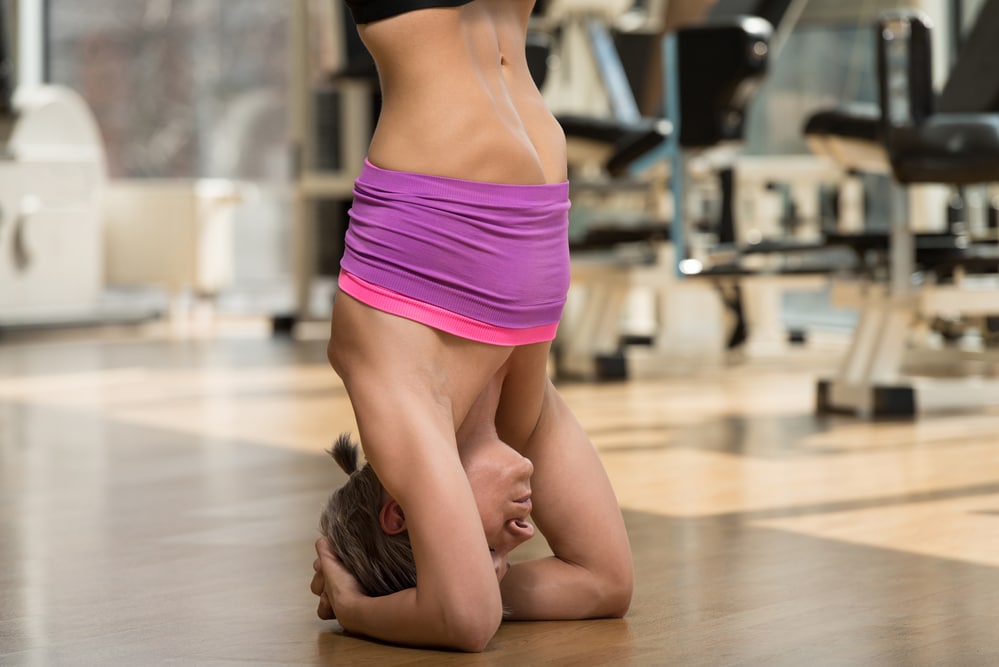 The forearm stand is basically the same position as the headstand. Being on your forearms elevates your body but not enough to be safe for high blood pressure because you are still upside down.
The forearm stand is basically the same position as the headstand. Being on your forearms elevates your body but not enough to be safe for high blood pressure because you are still upside down.
The forearm stand can be a tricky pose. The individual can become unsteady while trying to hold their body weight in the air. This can cause a great deal of pressure on the body which in turn raises the blood pressure even more.
3. Shoulder Stand and Plow Pose
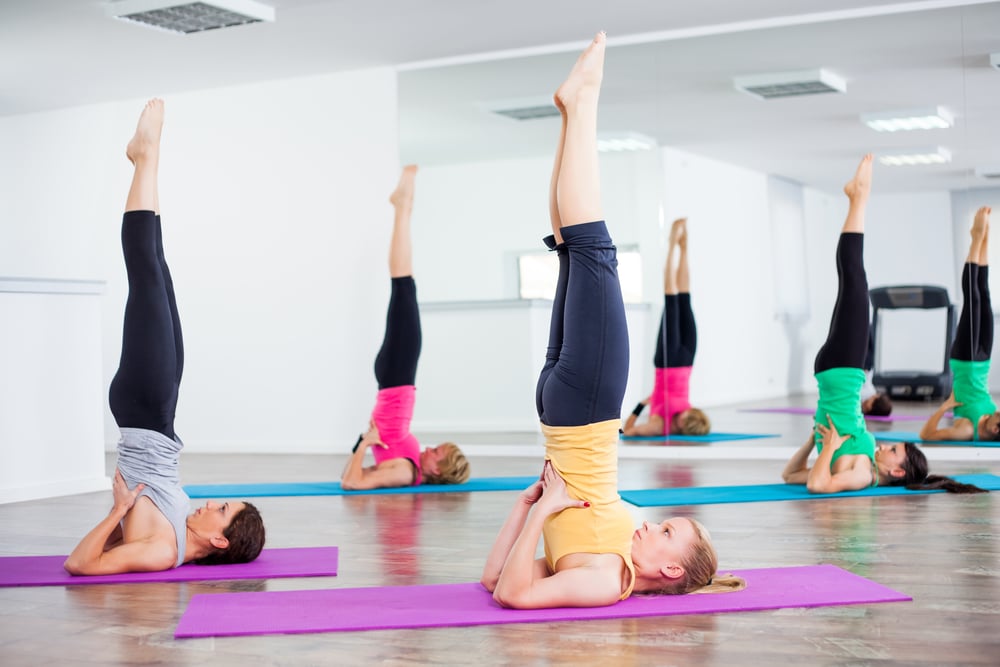 The shoulder stand and plow pose are two of the worst poses for individuals with high blood pressure because the pose requires an inverted position which instantly puts your body in a compromising position.
The shoulder stand and plow pose are two of the worst poses for individuals with high blood pressure because the pose requires an inverted position which instantly puts your body in a compromising position.
Shoulder stands require you to hold yourself upright from lying down. This yoga pose also forces your legs over your head and your body can often times become unsupported while in the air.
4. Handstand
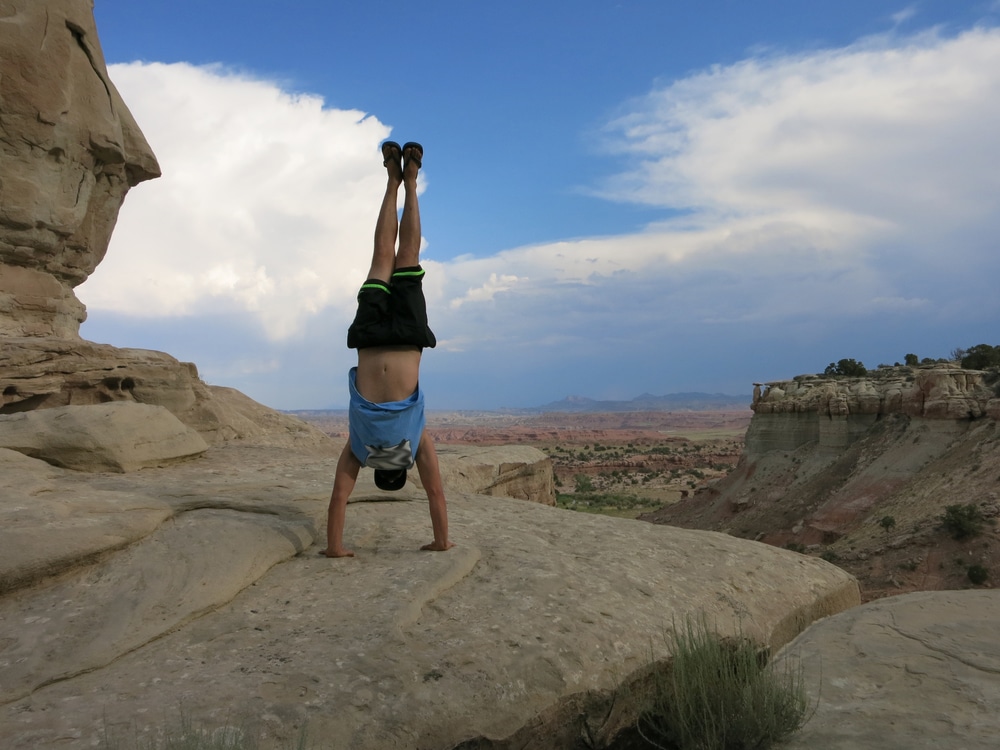 The handstand is an inverted pose that’s an extremely rigorous position. The pose puts the body in an upside down position and puts tremendous pressure on your shoulders and the rest of your upper body. Note that your legs being completely elevated in the air.
The handstand is an inverted pose that’s an extremely rigorous position. The pose puts the body in an upside down position and puts tremendous pressure on your shoulders and the rest of your upper body. Note that your legs being completely elevated in the air.
High blood pressure and elevated legs are not suggested companions. Handstands are rough on your wrists if you do not have proper posture and when you have to worry about elevated blood pressure levels, this pose is not the best.
5. Downward Facing Dog
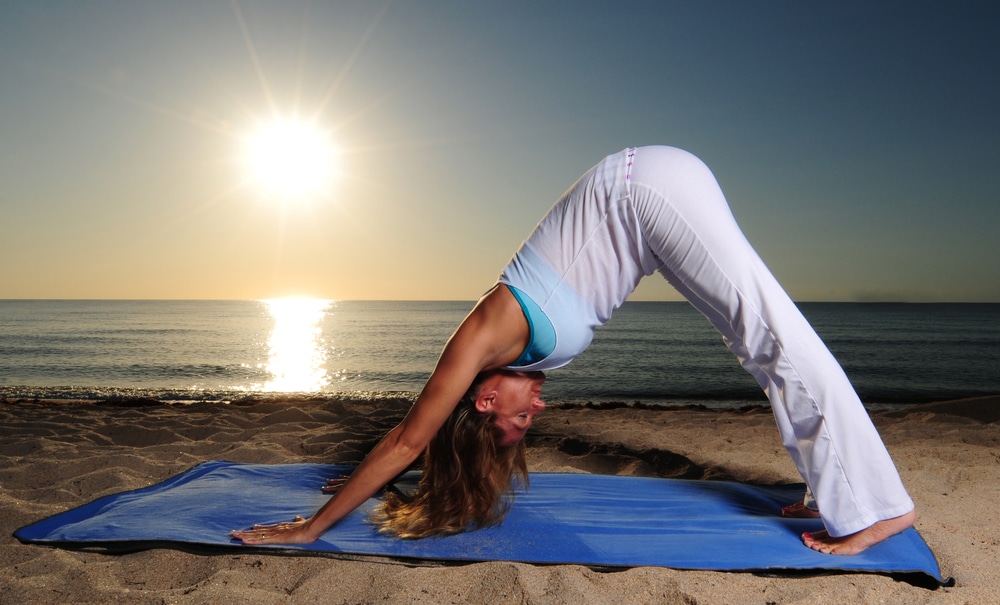 The downward facing dog is the pose that should be avoided the most because of the position of your body. This pose requires your body to be upside down and your head is remarkably below your heart which is the worst case scenario if your blood pressure is not in the healthy and safe category.
The downward facing dog is the pose that should be avoided the most because of the position of your body. This pose requires your body to be upside down and your head is remarkably below your heart which is the worst case scenario if your blood pressure is not in the healthy and safe category.
Although, the downward facing dog can be modified by doing the pose against a wall in order to make the whole body all an even length. For people with high pressure, I recommend using a basic yoga for beginners routine. These routines often don’t include dangerous, complex positions. Another option is to use a yoga routine designed for older ages. For example, check out our recommended yoga DVDs for beginners over 50 for several simple easy-to-do routines.
6. Standing Forward Bend
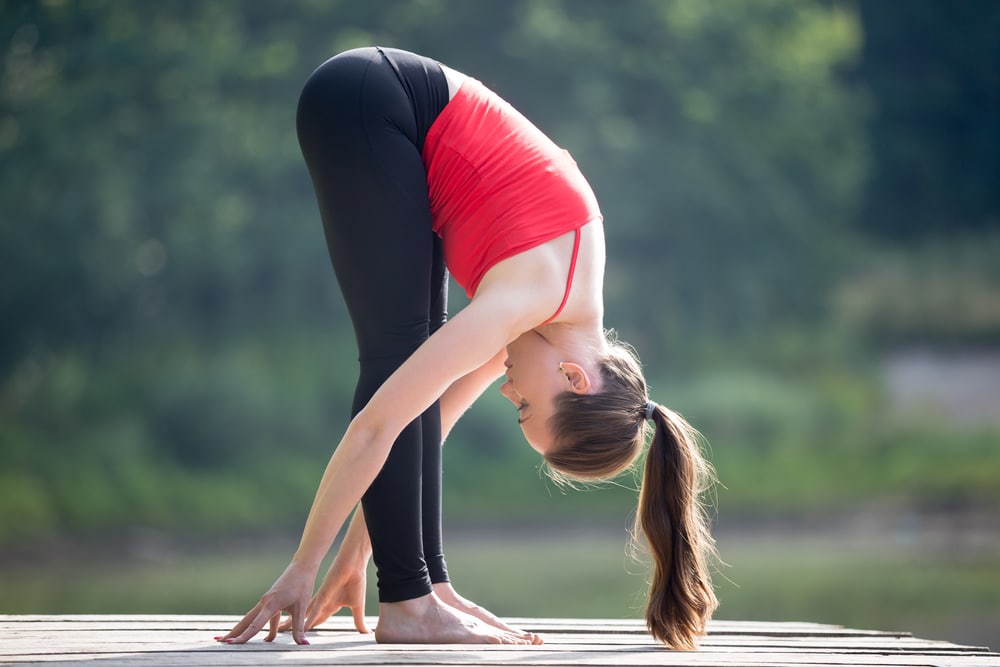 The standing forward bend is the one yoga pose where your body is actually folded in half right down the middle. If you’re standing upright, and fold your body directly over your heart, you are putting yourself in grave danger because all of the blood immediately rushes to your head away from your heart.
The standing forward bend is the one yoga pose where your body is actually folded in half right down the middle. If you’re standing upright, and fold your body directly over your heart, you are putting yourself in grave danger because all of the blood immediately rushes to your head away from your heart.
This pose can be modified by sitting down and doing a seated forward bend but make sure to keep your head upright to keep the blood flowing through the body.
7. Backbend
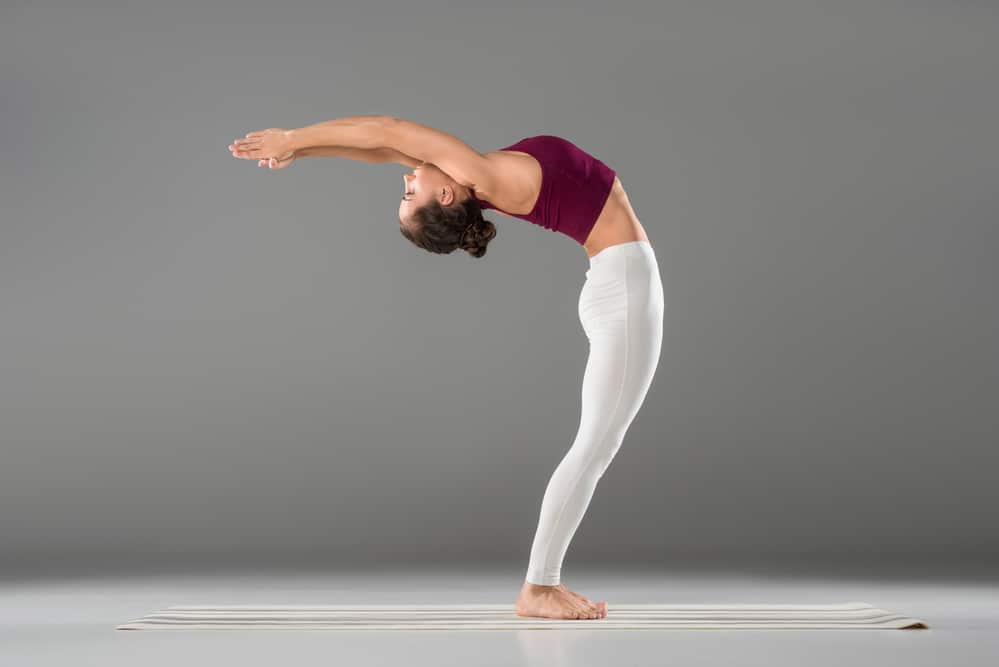 Backbends are exceptionally tense on the body, the whole entire body. Think about it. You are bending your whole body backward and have to support your own weight on your hands. Backbends can put your entire body under an intense amount of pressure if you are not properly prepared for the backbend pose.
Backbends are exceptionally tense on the body, the whole entire body. Think about it. You are bending your whole body backward and have to support your own weight on your hands. Backbends can put your entire body under an intense amount of pressure if you are not properly prepared for the backbend pose.
8. Wheel Pose
 The wheel pose is an advanced backbend. It takes a lot of strength, and stretches the chest, making it challenging to breathe unless you’re familiar with the 80/20 breath technique. Therefore, it is a very risky pose with high blood pressure. Instead, try supported bridge pose with a block for similar benefits.
The wheel pose is an advanced backbend. It takes a lot of strength, and stretches the chest, making it challenging to breathe unless you’re familiar with the 80/20 breath technique. Therefore, it is a very risky pose with high blood pressure. Instead, try supported bridge pose with a block for similar benefits.
9. Camel Pose
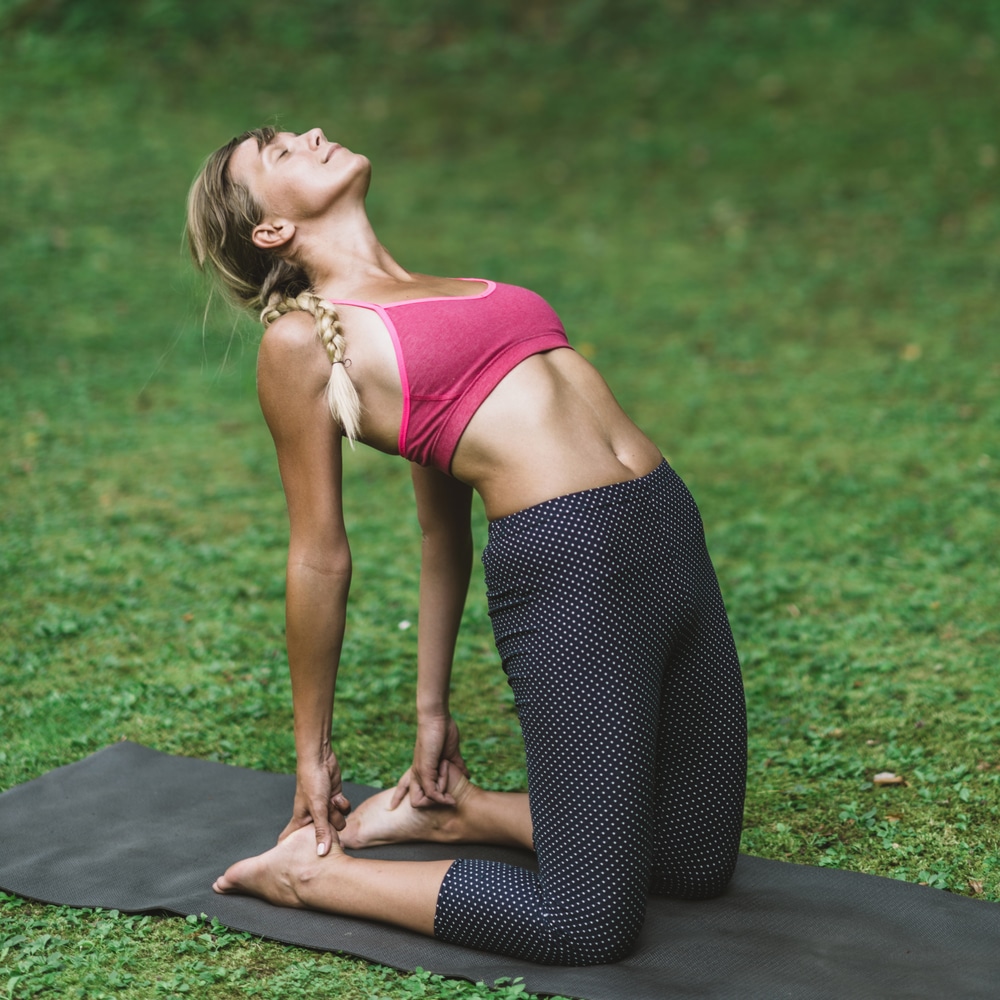 While this isn’t as intense of a pose as the wheel pose, you need to do many warm-ups to come into this backbend comfortably, and it can also be challenging to breathe normally in this pose. However, you can still do the half-camel pose with a very slight torso tilt backward, and hands supporting the lower back.
While this isn’t as intense of a pose as the wheel pose, you need to do many warm-ups to come into this backbend comfortably, and it can also be challenging to breathe normally in this pose. However, you can still do the half-camel pose with a very slight torso tilt backward, and hands supporting the lower back.
10. Bow Pose
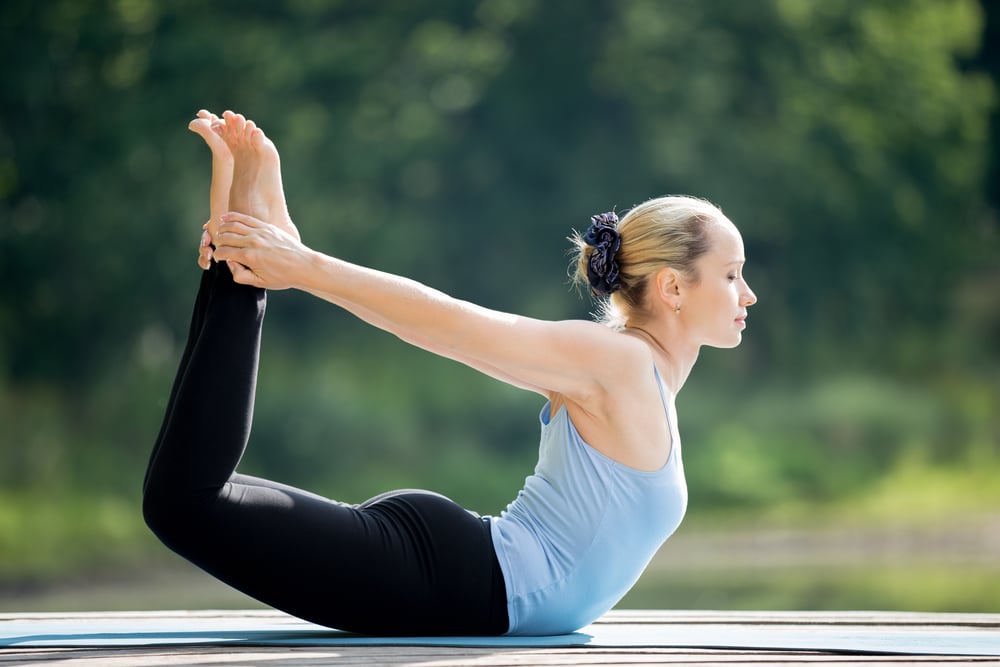 In this pose, you’re on your stomach, but you’re pulling your torso back towards your legs, and lifting the legs off the ground. It’s similar to wheel pose, but you’re on your stomach, and your arms are reaching back, rather than supporting your body weight.
In this pose, you’re on your stomach, but you’re pulling your torso back towards your legs, and lifting the legs off the ground. It’s similar to wheel pose, but you’re on your stomach, and your arms are reaching back, rather than supporting your body weight.
This pose would count as an advanced backbend, considering it’s challenging to breathe through the pose and requires a decent amount of flexibility. It’s best to skip this one. However, you may be able to do the locust pose, which is similar to this pose, but not as intense.
11. Jackknife Pose
Jackknife pose is a more advanced version of boat pose. Boat pose is safe with hypertension, but jackknife involves lifting the legs almost vertically and bringing the torso close to the thighs, making this a very difficult pose to breathe in.
12. Feet Up The Wall
Ask your doctor about this pose before practicing. Even though it is a relaxing pose, the body is inverted with the legs at a 90-degree angle.
13. Fish Pose
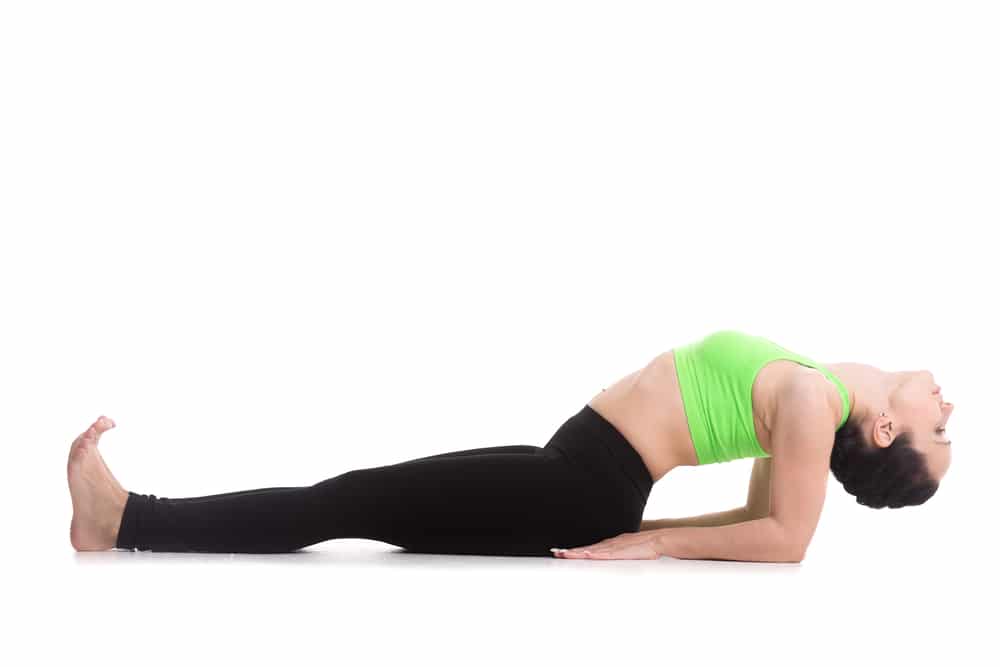 You can possibly practice the supported version of this pose. Place a block under the shoulders to make it less intense, and relax the feet rather than pointing them. This will allow you to breathe easier and still get a nice backbend to add flexibility to the spine.
You can possibly practice the supported version of this pose. Place a block under the shoulders to make it less intense, and relax the feet rather than pointing them. This will allow you to breathe easier and still get a nice backbend to add flexibility to the spine.
14. Bridge Pose
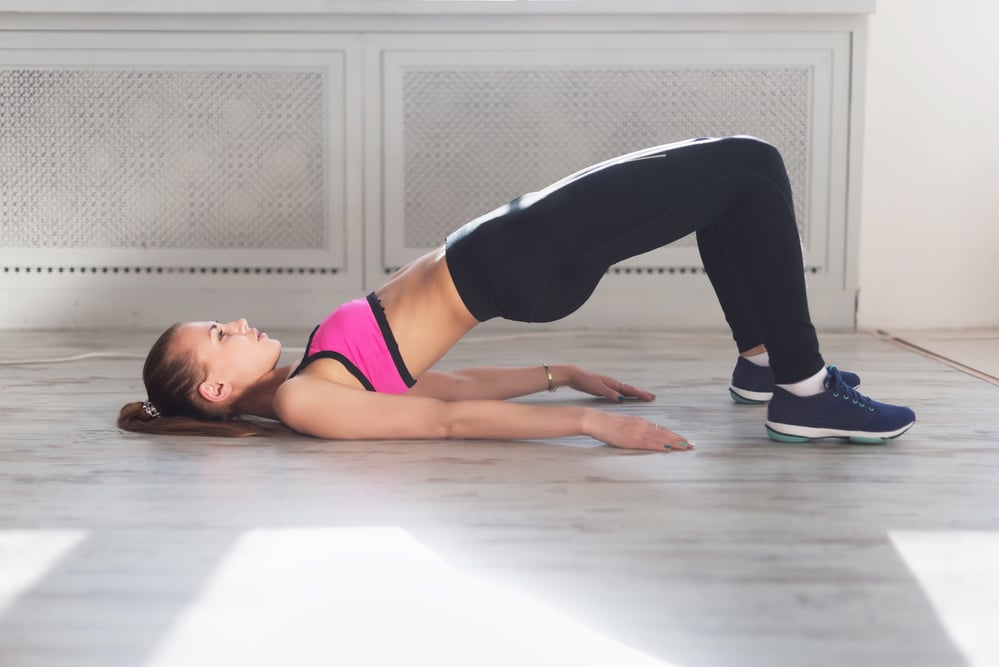 Practicing the bridge pose without a block is risky because it takes a lot of back strength, and puts pressure on the heart. Try placing a block at your tailbone (it should feel comfortable, or you need to adjust it), to get the benefits without strain.
Practicing the bridge pose without a block is risky because it takes a lot of back strength, and puts pressure on the heart. Try placing a block at your tailbone (it should feel comfortable, or you need to adjust it), to get the benefits without strain.
15. Locust Pose
 Mentioned earlier, this is a great alternative to bow pose. If you do practice this pose, be sure not to hold it for too long. Instead, take a couple breaths in the pose, relax and do a couple more repetitions.
Mentioned earlier, this is a great alternative to bow pose. If you do practice this pose, be sure not to hold it for too long. Instead, take a couple breaths in the pose, relax and do a couple more repetitions.
Baba Ramdev: Using Yoga and Meditation for High Blood Pressure
The original video has been translated into English, so the quality isn’t perfect, but the content is very good. Learn more about Ayurveda by reading this article.
Why Should You Avoid Certain Poses?
In general, you want to stay away from poses that invert the body, or where the head is below the heart. One reason is that when you do an inversion, blood goes towards the head, and blood pressure increases, which can cause a stroke in yogis that already have high blood pressure.
Furthermore, blood still needs to go towards the legs when you’re upside down, so the heart has to work harder to pump blood to the lower extremities, or legs, due to gravity no longer being of help.
Lastly, when you’re inverted, your abdominal organs, such as the stomach, intestines, and liver, press on your diaphragm. This makes it harder to breathe, which in turn makes the heart work more.
Other types of poses you want to avoid are advanced backbends (e.g., wheel poses). Backbends require a lot of strength, and often times when the torso is bent back, and the chest is stretched, it can make it difficult to breathe unless the person is experienced with proper breathing techniques.
This puts a lot of strain on the heart and allows the risk of not getting enough oxygen exchanged with carbon dioxide in the circulatory system.
High blood pressure is not a prison sentence but rather a stepping stone to a better you. Health-related issues often times arise to remind us what is important in life.
These issues can also be used as wakeup calls to allow us to re-evaluate all areas of our lives and where we need to make changes.
Please do not be discouraged from doing yoga if you do have high blood pressure. Yoga is extremely beneficial and can actually help reduce elevated blood pressure, but certain poses should be avoided.
You should continue to monitor yourself in the poses that you can do. The poses mentioned above should be avoided if you have high blood pressure because of the position your body is in during the poses.
In these particular poses your body is in an inverted position with your legs in a position that is higher than your heart and your head is lower than your heart. Inverted poses also force blood to your head and away from your heart which is of immediate concern to anyone with high blood pressure.
Breathing and holding your breath are the two very most important components of yoga and when an individual has high blood pressure their airways should never be constricted or blocked.
When a person holds their breath, blood pressure instantly increases which is an instant concern for those who have high blood pressure.
Yoga is one of the best natural medicines for many ailments, you just have to know which poses you can and cannot do.
The Best Yoga Poses for High Blood Pressure
Some Final Thoughts
Many studies are showing a drop in high blood pressure for volunteers dealing with hypertension that practice yoga regularly, due to some of the relaxing poses, pranayama, meditation, breathing exercises, and the distressing environment.
With that being said, there are some situations where you will want to be careful. First off, you’ll want to avoid hot yoga, or Bikram yoga altogether, due to the almost, hundred-degree heat involved creating electrolyte imbalance, which could cause the heart to overwork.
Secondly, you will want to avoid yoga poses that put you in a position that counteracts with high blood pressure. If you have high blood pressure this does not mean that you can never do yoga or experience the amazing benefits.
There are yoga poses to avoid, but there are also yoga poses that are safe to do if you do have high blood pressure.
Please remember that inverted poses are not safe for you because of the position of your legs, head, and heart. High blood pressure just requires a little tender, love, and care.
If you have hypertension, please do not be alarmed by this article. This information is meant to keep you safe while practicing yoga, not stray away from it. You can still practice active lunge poses, standing poses, seated poses, twists and practically all the yin and restorative poses!
The benefits truly do outweigh the risks, and as long as you modify your practice to work for you, or visit a yoga therapist that can design sequences for you, you’ll have enjoyable yoga sessions that better your life.
It is also extremely important to continue to see your physician as regularly as you do. If you are currently taking blood pressure medication, please continue to do so and of course consult your physician if you have any other health-related issues.
